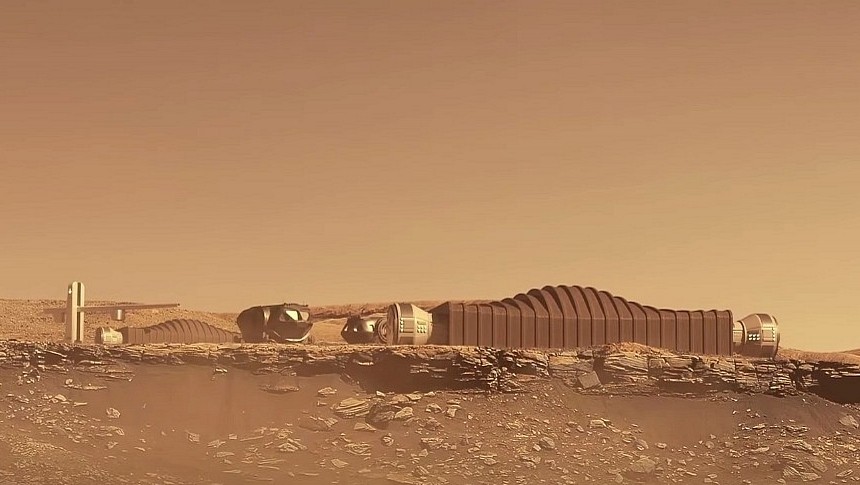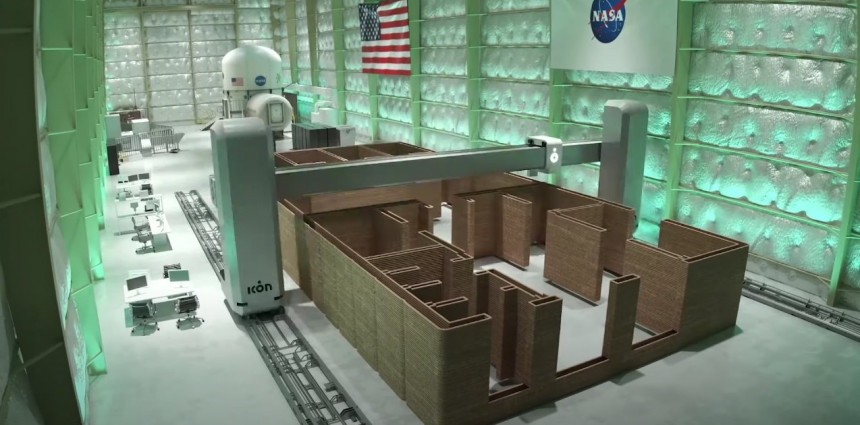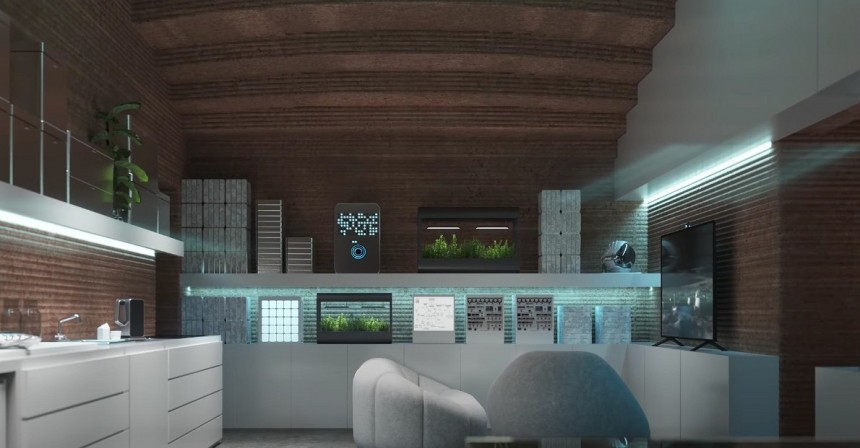Mark Watney is a super astronaut. Stranded and completely alone on the surface of Mars, he has to survive all by himself as he waits for a rescue mission to come and put an end to his ordeal. And it does, but not before over 560 Martian days of loneliness pass over the Red Planet and the astronaut.
All of the above is more or less the story in Andy Weir's book The Martian. It came out in 2014 and it was so good that just one year later Hollywood turned it into a movie. And for the past 200 days or so, four people have been living it.
At the end of June 2023 four humans launched themselves head-on into a program NASA calls the Crew Health and Performance Exploration Analog (CHAPEA). Centered around a habitat called Mars Dune Alpha and meant to simulate the conditions we're most likely to encounter over on Mars, the program is here to inform NASA on how it can back human missions to Mars.
When it announced the program, NASA said it would run three simulations, each with a different crew, to get a broader picture of what survival on Mars could require. By that it means looking not only at how astronaut life can be sustained but also at how crews will cope with unexpected events like equipment failure.
That first crew I mentioned earlier just passed the halfway mark of their mission on January 11, 2024. By all accounts, despite their isolation, things seem to be going just as planned, and the people taking part have even pulled some Mark Watney stunts in there.
In the book (and in the movie) one of the main concerns of the stranded astronaut was to ensure food for himself. That generally meant growing his own vegetables (read potatoes) in Martian soil fertilized with human waste. In this imaginary world, the process worked, and Watney had enough potatoes to survive.
Growing food was one of the main concerns of the first CHAPEA crew as well during their first 200 days inside the Mars Dune Alpha habitat. Just like it happened for Watney, food in the form of tomatoes, peppers, and leafy greens were grown in the harsh conditions.
Unlike Watney, their crops did not include potatoes, real Martian soil, and of course no human waste, but the fact crops were grown at all proves that, given the right tools and conditions, agriculture is possible on Mars.
Toils of the land were not the only activities the four people focused on. They also conducted a series of science investigations in biological and physical sciences (exact details on them have not been provided yet).
Most importantly, the first CHAPEA crew conducted a series of simulated Marswalks, missions performed outside the habitat to practice what it would take to travel on the open, bare surface of the neighboring planet. We're not given any specifics into these things either, except for the fact they included "relevant time delay, tempo, and activities consistent with future Mars mission concepts."
And now a few things about the place where this mock Mars mission is taking place. The 1,700-square-foot (160 square meters) module called Mars Dune Alpha is the work of a 3D printing company called ICON. It is located at the NASA Johnson Space Center, and the agency describes Alpha as "the highest-fidelity simulated habitat ever constructed by humans."
Four private crew quarters have been imagined for the habitat, but also dedicated workstations, medical stations, and food-growing stations. The rooms and stations at different ends of the module are kept apart from one another by the living spaces designed in between them.
The place has varying ceiling heights in a bid to avoid spatial monotony that may affect the inhabitants and an overall arching shell structure. Both fixed and movable items are used for furniture, with environment settings (lighting, temperature, and sound) being fully customizable.
The current CHAPEA mission is scheduled to end on July 6, 2024. We do not know yet when NASA will kick off the second mission, but we do know a thing or two about the criteria the participants need to meet.
All people who applied for CHAPEA are U.S. citizens or permanent residents, aged between 30 and 55 years old. They are non-smokers and free from food allergies, avoidances, or gastrointestinal disorders. At the same time, people taking part in this will have to survive with no food supplements (except for vitamin D) and eat only spaceflight-like food.
As far as experience goes, NASA only accepted people with a master's degree from an accredited institution in a STEM field (engineering, biological science, physical science, computer science or mathematics), with two or more years of experience in their respective fields. Having at least 1,000 hours of pilot-in-command time on jet aircraft was also a must.
All of the above only goes to show just how demanding a real mission to Mars will be, in all its aspects, from spacecraft and rocket to the kind of people that will be selected to take part.
At the end of June 2023 four humans launched themselves head-on into a program NASA calls the Crew Health and Performance Exploration Analog (CHAPEA). Centered around a habitat called Mars Dune Alpha and meant to simulate the conditions we're most likely to encounter over on Mars, the program is here to inform NASA on how it can back human missions to Mars.
When it announced the program, NASA said it would run three simulations, each with a different crew, to get a broader picture of what survival on Mars could require. By that it means looking not only at how astronaut life can be sustained but also at how crews will cope with unexpected events like equipment failure.
That first crew I mentioned earlier just passed the halfway mark of their mission on January 11, 2024. By all accounts, despite their isolation, things seem to be going just as planned, and the people taking part have even pulled some Mark Watney stunts in there.
In the book (and in the movie) one of the main concerns of the stranded astronaut was to ensure food for himself. That generally meant growing his own vegetables (read potatoes) in Martian soil fertilized with human waste. In this imaginary world, the process worked, and Watney had enough potatoes to survive.
Growing food was one of the main concerns of the first CHAPEA crew as well during their first 200 days inside the Mars Dune Alpha habitat. Just like it happened for Watney, food in the form of tomatoes, peppers, and leafy greens were grown in the harsh conditions.
Toils of the land were not the only activities the four people focused on. They also conducted a series of science investigations in biological and physical sciences (exact details on them have not been provided yet).
Most importantly, the first CHAPEA crew conducted a series of simulated Marswalks, missions performed outside the habitat to practice what it would take to travel on the open, bare surface of the neighboring planet. We're not given any specifics into these things either, except for the fact they included "relevant time delay, tempo, and activities consistent with future Mars mission concepts."
And now a few things about the place where this mock Mars mission is taking place. The 1,700-square-foot (160 square meters) module called Mars Dune Alpha is the work of a 3D printing company called ICON. It is located at the NASA Johnson Space Center, and the agency describes Alpha as "the highest-fidelity simulated habitat ever constructed by humans."
Four private crew quarters have been imagined for the habitat, but also dedicated workstations, medical stations, and food-growing stations. The rooms and stations at different ends of the module are kept apart from one another by the living spaces designed in between them.
The place has varying ceiling heights in a bid to avoid spatial monotony that may affect the inhabitants and an overall arching shell structure. Both fixed and movable items are used for furniture, with environment settings (lighting, temperature, and sound) being fully customizable.
All people who applied for CHAPEA are U.S. citizens or permanent residents, aged between 30 and 55 years old. They are non-smokers and free from food allergies, avoidances, or gastrointestinal disorders. At the same time, people taking part in this will have to survive with no food supplements (except for vitamin D) and eat only spaceflight-like food.
As far as experience goes, NASA only accepted people with a master's degree from an accredited institution in a STEM field (engineering, biological science, physical science, computer science or mathematics), with two or more years of experience in their respective fields. Having at least 1,000 hours of pilot-in-command time on jet aircraft was also a must.
All of the above only goes to show just how demanding a real mission to Mars will be, in all its aspects, from spacecraft and rocket to the kind of people that will be selected to take part.









